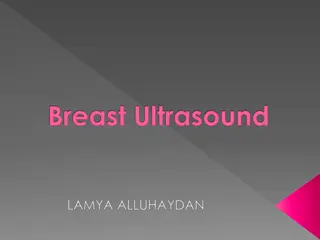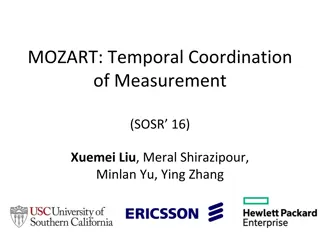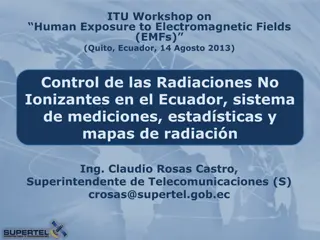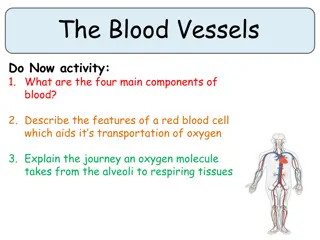Revolutionizing Sonographic Blood Flow Measurement with PixelFlux
Novelties in PixelFlux technology offer a groundbreaking approach to sonographic blood flow measurement, enabling precise and accurate flow volume calculations through innovative features such as three-dimensional Doppler angle correction, pixelwise flow analysis, and dynamic measurements throughout the cardiac cycle. With automatic artifact recognition and a range of additional features, PixelFlux provides a comprehensive solution to traditional flow volume calculation challenges.
Download Presentation

Please find below an Image/Link to download the presentation.
The content on the website is provided AS IS for your information and personal use only. It may not be sold, licensed, or shared on other websites without obtaining consent from the author. Download presentation by click this link. If you encounter any issues during the download, it is possible that the publisher has removed the file from their server.
E N D
Presentation Transcript
Novelties in a nutshell PixelFlux is a fundamentally new approach to sonographic blood flow measurement Its unique features three-dimensional Doppler angle correction of all flow data vessel area (as the sum of pixels areas), flow velocity and flow volumes this allows for the first time true flow volume measurements by means of ultrasound 3D data are calculated even from simple 2D images of arteries first pixelwise flow calculation omittance of diameter based area calculations of vessels area overcome fundamental conceptual errors in classic flow measurements ( area*mean flow velocity-method) dynamic calculation of all changes during the heart cycle automatized measurements time sparing more than 50 parameters of flow evaluated direct data export to csv-based static software (Excel , SPSS) graphic display of results with numerical analysis of graphics many additional features: shape quantification, PI and RI measurements, free definitiopn of reproducibale and scalable ROIs (startified layers, target like rings, free hand ROIs with concentric baby-ROIs , grid as anchor for ROIs, context sensitive help file, automatic artifact recognition and disposal of unsuitable files German certified medical product Black and white / as well as color measurements in graphic files
Traditional* Flow volume calculation from 2D-data with inherent methodical error Systematic but variable error due to underestimation of the contribution of peripheral flow, since the fractional peripheral area is substantially greater than its share in the diameter. So it is basically wrong to assign equal diameter segments to mean flow velocity values to calculate a correct flow volume * area is calculated from artery s diameter and multiplied by the mean flow velocity mean flow velocity derived from spectral analysis of flow 9 TAV : 4%12%20%28%36% 1 0,2r 1 : 1 17.09.2024 Dreil ndertreffen GUM, SGUM, DEGUM Innsbruck 29.10.-31.10.2014 3
Solution of the basic problem : PixelFlux- technique Eac color pixel is measured individually : area, velocity and spatial angle Each pixels angle corrected area is multiplied by angle corrected velocity All pixels flow volumes are summed up Thus also non-circular vessels can be measured exactly For the first time exact flow volumes can be measured due to spatial angel correction and pixelwise measurememnts in pulsating vessels by means of standardized color Doppler videos 17.09.2024 Dreil ndertreffen GUM, SGUM, DEGUM Innsbruck 29.10.-31.10.2014 4
Automatische Raumwinkelkorrektur 17.09.2024 Dreil ndertreffen GUM, SGUM, DEGUM Innsbruck 29.10.-31.10.2014 5
PixelFlux-technique step by step Recording of standardized color Doppler sonographic videos 3 seconds duration, fixed preset, fixed gain, Transfer of the video clip into the PixelFlux-software automatic calibration of distances and translation of color hues into velocity values Standardized positioning of the cortical region of interest (see next slide) Automatic perfusion measurement takes about 5 seconds Measurement results false color perfusion map perfusion diagram perfusion data and statistics timelines PACS-storage for details see: www.chameleon-software.de
Method PixelFlux-measurement of tissue perfusion(www.chameleon www.chameleon- -software.de software.de ) most peripheral 20% -layer peripheral 50% -layer central 50% -layer most central 20% -layer Perfusion intensity (I) area of colored pixels (A) velocity values of colored pixels (v) area of ROI (AROI) I = A * v / AROI
Schematic and real positionining of the region of interest (ROI) in PixelFlux-measurements Distal slice of the ROI encompassing the peripheral 50% and 20% one vascular cortical segment fed by one interlobar artery interlobular arteries interlobular arteries Perfusion diagram of the respective layer arcuate arteries medullary pyramids arcuate arteries interlobar artery proximal slice of the ROI encompassing the central 50% and 20% Kidney in longitudinal section ROI encompassing one full cortical segment Close-up view of the ROI encompassing one full cortical segment
Results Comparison of reflux groups in the distal cortex D50 D50 Perfusion diagram of the respective layer p = 0,001 The higher the reflux grade, the lower is the perfusion intensity in the peripheral cortex D50. p = 0,030 p = 0,035
Results Comparison of reflux groups in the most distal cortex D20 D20 p = 0,003 Perfusion diagram of the respective layer In the most peripheral cortex D20 a significantly reduced perfusion is found in all reflux groups compared to healthy kidneys p = 0,004
Results Perfusion in Perfusion in the the central central cortical cortical layers layers P50 und P20 P50 und P20 is is not not significantly significantly reduced reduced Perfusion diagram of the respective layer
Summary Kidneys with VUR showed a significantly reduced cortical perfusion. This reduction correlated to the reflux grade and as well as to the cortical layer Reduction of tissue perfusion [%] compared to healthy kidneys Low grade reflux High grade reflux Proximal 50 % of renal cortex 3 12 Distal 50 % of renal cortex 21 44 Most distal 20 % of renal cortex 41 44
















































